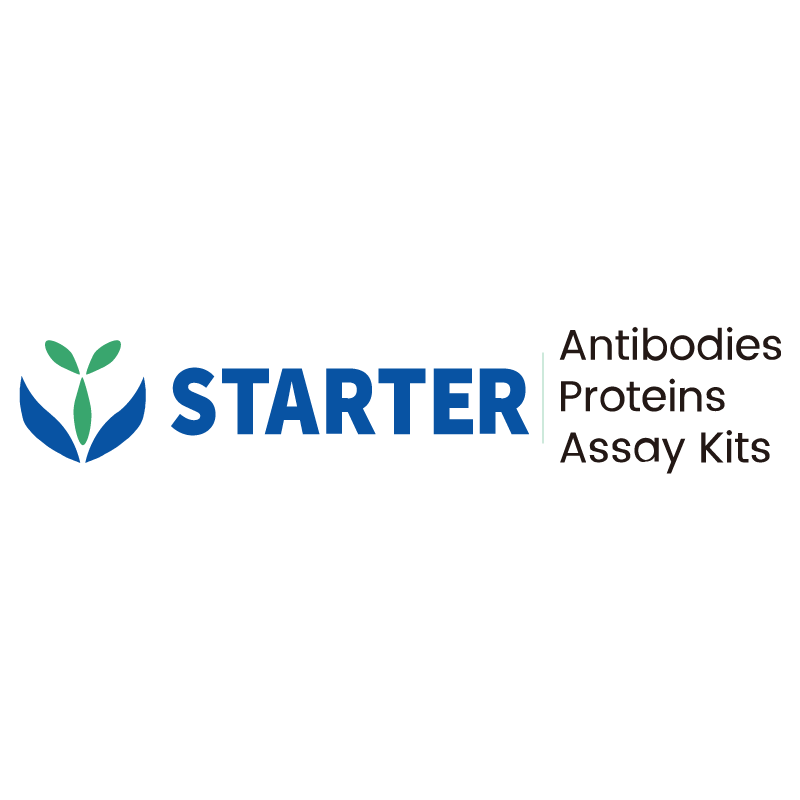WB result of PGC1 beta Recombinant Rabbit mAb
Primary antibody: PGC1 beta Recombinant Rabbit mAb at 1/1000 dilution
Lane 1: MCF7 whole cell lysate 20 µg
Lane 2: HeLa whole cell lysate 20 µg
Lane 3: SH-SY5Y whole cell lysate 20 µg
Secondary antibody: Goat Anti-rabbit IgG, (H+L), HRP conjugated at 1/10000 dilution
Predicted MW: 113 kDa
Observed MW: 115 kDa
Product Details
Product Details
Product Specification
| Host | Rabbit |
| Antigen | PGC1 beta |
| Synonyms | Peroxisome proliferator-activated receptor gamma coactivator 1-beta; PGC-1-beta; PPAR-gamma coactivator 1-beta; PPARGC-1-beta; PGC-1-related estrogen receptor alpha coactivator; PERC; PGC1; PGC1B; PPARGC1; PPARGC1B |
| Immunogen | Synthetic Peptide |
| Location | Nucleus |
| Accession | Q86YN6 |
| Clone Number | S-1212-146 |
| Antibody Type | Recombinant mAb |
| Isotype | IgG |
| Application | WB, IHC-P, ICC |
| Reactivity | Hu |
| Positive Sample | MCF7, HeLa, SH-SY5Y |
| Purification | Protein A |
| Concentration | 0.5 mg/ml |
| Conjugation | Unconjugated |
| Physical Appearance | Liquid |
| Storage Buffer | PBS, 40% Glycerol, 0.05% BSA, 0.03% Proclin 300 |
| Stability & Storage | 12 months from date of receipt / reconstitution, -20 °C as supplied |
Dilution
| application | dilution | species |
| WB | 1:1000 | Hu |
| IHC-P | 1:1000 | Hu |
| ICC | 1:500 | Hu |
Background
PGC-1β (Peroxisome Proliferator-Activated Receptor Gamma Coactivator-1 beta) is a transcriptional coactivator that plays a crucial role in regulating cellular energy metabolism, mitochondrial biogenesis, and lipid homeostasis. It shares significant functional overlap with its more extensively studied counterpart, PGC-1α, but has distinct roles in specific tissues. PGC-1β is involved in enhancing oxidative phosphorylation (OXPHOS) and fatty acid oxidation (FAO) in mitochondria, thereby supporting cellular energy production. In diseases such as cancer, PGC-1β can have dual effects; for instance, in colorectal cancer, it acts as a downstream effector of oncogenic pathways, promoting cell survival and tumor growth. In hepatocellular carcinoma, PGC-1β can both support tumor anabolism by regulating lipid synthesis and contribute to drug resistance through mitochondrial adaptations. Its complex interactions with various transcription factors and metabolic pathways highlight its importance in both physiological and pathological contexts.
Picture
Picture
Western Blot
Immunohistochemistry
IHC shows positive staining in paraffin-embedded human colon. Anti-PGC1 beta antibody was used at 1/1000 dilution, followed by a HRP Polymer for Mouse & Rabbit IgG (ready to use). Counterstained with hematoxylin. Heat mediated antigen retrieval with Tris/EDTA buffer pH9.0 was performed before commencing with IHC staining protocol.
IHC shows positive staining in paraffin-embedded human prostatic hyperplasia. Anti-PGC1 beta antibody was used at 1/1000 dilution, followed by a HRP Polymer for Mouse & Rabbit IgG (ready to use). Counterstained with hematoxylin. Heat mediated antigen retrieval with Tris/EDTA buffer pH9.0 was performed before commencing with IHC staining protocol.
IHC shows positive staining in paraffin-embedded human cervical squamous cell carcinoma. Anti-PGC1 beta antibody was used at 1/1000 dilution, followed by a HRP Polymer for Mouse & Rabbit IgG (ready to use). Counterstained with hematoxylin. Heat mediated antigen retrieval with Tris/EDTA buffer pH9.0 was performed before commencing with IHC staining protocol.
IHC shows positive staining in paraffin-embedded human colon cancer. Anti-PGC1 beta antibody was used at 1/1000 dilution, followed by a HRP Polymer for Mouse & Rabbit IgG (ready to use). Counterstained with hematoxylin. Heat mediated antigen retrieval with Tris/EDTA buffer pH9.0 was performed before commencing with IHC staining protocol.
Immunocytochemistry
ICC shows positive staining in MCF7 cells. Anti-PGC1 beta antibody was used at 1/500 dilution (Green) and incubated overnight at 4°C. Goat polyclonal Antibody to Rabbit IgG - H&L (Alexa Fluor® 488) was used as secondary antibody at 1/1000 dilution. The cells were fixed with 100% ice-cold methanol and permeabilized with 0.1% PBS-Triton X-100. Nuclei were counterstained with DAPI (Blue). Counterstain with tubulin (Red).


